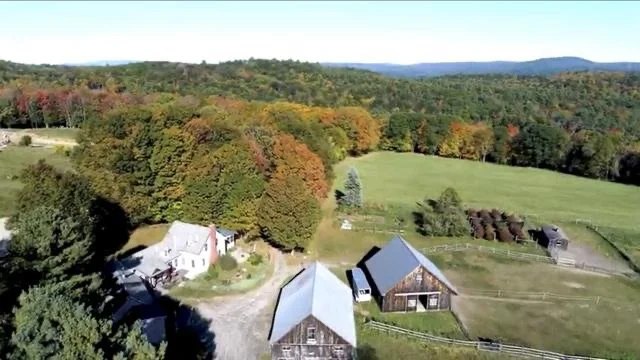Hay Farming in Vermont
Hay farming has a long and rich history in Vermont. Early on, farmers understood the importance of cultivating hay to sustain their livestock through the harsh winters. Over the years, hay production became more organized, aided by advancements in farming equipment. At its peak, in the mid-20th century, the state boasted over 11,000 operational farms dedicated to dairy production and hay was a vital resource for the thriving dairy industry.
While the numbers have declined in recent years, hay farming in Vermont remains significant. Today, there are over 1,500 hay farms in the state, which generate an estimated 1.5 million tons of hay annually. They not only provide a sustainable resource for livestock but also contribute to the preservation of Vermont's rural heritage and its vibrant agricultural legacy.
Building the Farm
Historic Hemlock Ridge Farm was built in the early 19th century and the original property was 260 acres. The original farm consisted of the barn (still standing), farmhouse, sugar house, equipment shed, dairy/turkey bank barn. This original farm was run by the Gammell family until the 1880s.
1936-1950
While the farm has primarily served as a dairy farm, it was briefly a turkey farm between 1936 and 1950. During this time Francis A. Bolles operated the farm as the Green Mountain Turkey Farm. It was the largest farm in Vermont.
After 1980
After 1980, the farm was used for raising horses. The horses were kept in the surviving early 19th century barn and a new building was added to the property in 1981: an equipment shed.




